

Human Body. Health supplements. DIet and Nutrition. Human Body. Modeling&Anatomy. Modeling&Anatomy. Computers Only. Pelvic Inflammatory Disease - CDC Fact Sheet. Basic fact sheets are presented in plain language for individuals with general questions about sexually transmitted diseases.
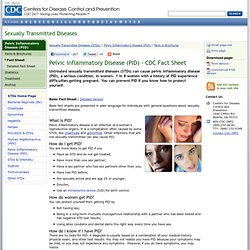
What is PID? Pelvic inflammatory disease is an infection of a woman’s reproductive organs. It is a complication often caused by some STDs, like chlamydia and gonorrhea. Other infections that are not sexually transmitted can also cause PID. Back to Top How do I get PID? You are more likely to get PID if you Have an STD and do not get treated; Have more than one sex partner; Have a sex partner who has sex partners other than you; Have had PID before; Are sexually active and are age 25 or younger; Douche; Use an intrauterine device (IUD) for birth control.
How do women get PID? You can protect yourself from getting PID by. Chlamydia. About STDs - Your Ultimate Reference Guide - The STD Project. About STDs - Info, Posts, and Pages about STIs/STDs. Brain. Human Physiology Animation and Tutorial Links. 3D Body Builder. How One Woman Is Changing the Sex 'Talk' Human Anatomy: InnerBody.com. Sexuality. Brain. 3D Body Builder. Interactive Health Tutorials: MedlinePlus. Anatomy Videos: MedlinePlus. <span>To use the sharing features on this page, please enable JavaScript.
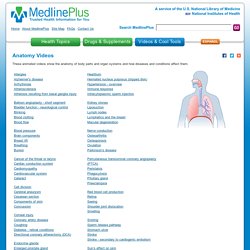
</span> These animated videos show the anatomy of body parts and organ systems and how diseases and conditions affect them. The videos play in QuickTime format. If you do not have QuickTime, you will be prompted to obtain a free download of the software before you view a video. You can download the Apple QuickTime player at: General Health Issues. Brainspace. How Big Is The Brain? Here's Some Perspective. SExpand Imagine your brain is the size of Earth.
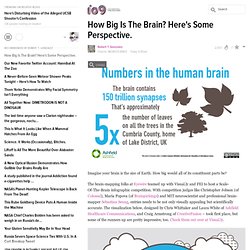
How big would all of its constituent parts be? The brain-mapping folks at Eyewire teamed up with Visual.ly and FEI to host a Scale-Of-The-Brain infographic competition. With competition judges like Christopher Jobson (of Colossal), Maria Popova (of Brainpickings) and MIT neuroscientist and professional brain-mapper Sebastian Seung, entries neede to be not only visually appealing but scientifically accurate. The visualization below, designed by Chris Whittaker and Laura White of Ashfield Healthcare Communications, and Craig Armstrong of CreativeFusion – took first place, but some of the runners up are pretty impressive, too. While not wrong, this statistic annoys me.
Pelvic Inflammatory Disease - CDC Fact Sheet. Cervical Os Definition - What is the Cervical Os? Home. Junior year. Anatomy class. Cat dissection. Look!

He’s waving! Skinning the legs has been my favorite part of the dissection process so far. Nervous System Information. Navigation links Introduction As the most complex system, the nervous system serves as the body control center and communications electrical-chemical wiring network.

As a key homeostatic regulatory and coordinating system, it detects, interprets, and responds to changes in internal and external conditions. The nervous system integrates countless bits of information and generates appropriate reactions by sending electrochemical impulses through nerves to effector organs such as muscles and glands. The brain and spinal cord are the central nervous system (CNS); the connecting nerve processes to effectors and receptors serve as the peripheral nervous system (PNS). CNS: neurons, brain, spinal cord. Muscles of the shoulders and arms. Index of /Circulatory/samples/images.
Ten Helpful Mnemonics for Clinical Anatomy Terms. Learning (and memorizing) the names and locations of anatomical structures isn’t easy, so clinical anatomy students often develop mnemonics, or memory tricks, to make it a little easier.
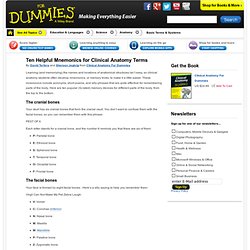
These mnemonics include acronyms, short poems, and silly phrases that are quite effective for remembering parts of the body. Here are ten popular (G-rated) memory devices for different parts of the body, from the top to the bottom. The cranial bones Your skull has six cranial bones that form the cranial vault. You don’t want to confuse them with the facial bones, so you can remember them with this phrase: Homepage Physiology and Anatomy. ANATOMY. Planes and Axes Lab. The correct response is TRUE.

Hip abduction and adduction both occur in the frontal plane about an anterior-posterior axis. The correct response is SAGITTAL. Trunk flexion and extension occur in the sagittal plane about a medio-lateral axis. The correct response is FALSE. Search results. Full Body MRI : gifs. VISIBLE HUMAN PROJECT. Movements at Wrist Joint - Netter Medical Illustrations. Movements at Wrist Joint Image ID: 2490 If you can see this message, you need to update your Flash Player. ©2005–2012 Elsevier.
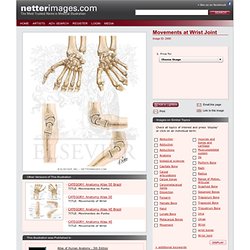
All Rights Reserved. Slides for A&P 202. Cardiothoracic Imaging - Oblique view of the heart. Fetal Development and Risk. Interactive Biology, by Leslie Samuel. Chromosomal Sex Determination in Mammals - Developmental Biology - NCBI Bookshelf. Chromosomal Sex Determination in Mammals - Developmental Biology - NCBI Bookshelf. Holiday Lectures on Science. Biology Animation Library. Resources, Animations, Interviews, + Tools. We are enhancing our most popular resources by building collections around them.
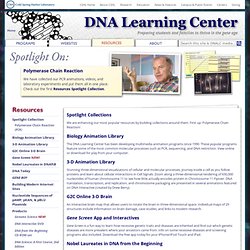
First up: Polymerase Chain Reaction! The DNA Learning Center has been developing multimedia animation programs since 1990. These popular programs feature some of the most common molecular processes such as PCR, sequencing, and DNA restriction. View online or download for play from your computer. How Is Sex Determined? Pronounce Names - Pronounce Scala, How to pronounce Scala, How to pronounce the name Scala, Pronunciation of Scala, how to say Scala, how to say the name Scala. Scala Pronunciations. Pronunciation of creatinine - how to pronounce creatinine correctly. Neuroanatomy. Full Body Anatomy, Interactive Skeleton, Muscle and Brain Models. Kisdwebs.katyisd.org/campuses/MRHS/teacherweb/hallk/Teacher Documents/AP Biology Materials/Body Systems/Human Reproduction/48_A02s.swf. Animations and Tutorials. Comparison of Meiosis and Mitosis (Quiz 1) Outreach.mcb.harvard.edu/animations/cellcycle.swf. How Cells Divide. Share By Rick Groleau Posted 10.09.01 NOVA Most of the time, when a cell in our bodies divides, each new cell carries a complete set of chromosomes.
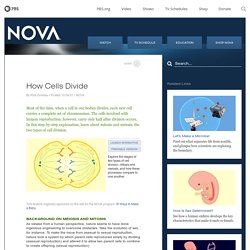
The cells involved with human reproduction, however, carry only half after division occurs. In this step-by-step explanation, learn about mitosis and meiosis, the two types of cell division. This feature originally appeared on the site for the NOVA program 18 Ways to Make a Baby. Background on Meiosis and Mitosis As viewed from a human perspective, nature seems to have done ingenious engineering to overcome obstacles. Asexual reproduction relies on a process called mitosis, in which the nucleus of a cell divides to create two new nuclei, each containing an identical copy of DNA. Meiosis, on the other hand, is the process by which certain sex cells are created. LUMEN Histology home page. Human Physiology Animation and Tutorial Links. Biology 120 Animations. Anatomy and Physiology Interactive Video Animations. Skin and Contents. Chemical Synapse (Quiz 2) Skin and Contents. Labeling Exercises.
Studying Muscle Anatomy and Kinesiology. What is the strongest muscle in the human body? (Everyday Mysteries: Fun Science Facts from the Library of Congress) There are three types of muscles in the human body: cardiac, smooth and skeletal. Cardiac muscle makes up the wall of the heart and is responsible for the forceful contraction of the heart. Smooth muscles make up the walls of the intestine, the uterus, blood vessels, and internal muscles of the eye. Skeletal muscles are attached to the bones and in some areas the skin (muscles in our face). Contraction of the skeletal muscles helps limbs and other body parts move. Human Sense Organs - The Five Senses. Aristotle (384 BC - 322 BC) is credited with the traditional classification of the five sense organs: sight, smell, taste, touch, and hearing. As far back as the 1760's, the famous philosopher Immanuel Kant proposed that our knowledge of the outside world depends on our modes of perception. In order to define what is "extrasensory" we need to define what is "sensory".
Each of the 5 senses consists of organs with specialized cellular structures that have receptors for specific stimuli. Drosophila gene families: Cyclic AMP second messenger system - The learning pathway. Pronunciation of hyper - how to pronounce hyper correctly. This site uses Copyright © Tim Bowyer 2006-14 • All rights reserved U.S. Patent No. 20040162719 • Howjsay in: Deutsch • Français • Italiano • Español • Requests, Errata etc. Search" Human Anatomy. Anatomy Physiology Online Courses, Anatomy Physiology Video Lectures, Anatomy Physiology Video Tutorials. Health Topics. Anatomy Videos. NHC Anatomy and Physiology I Interactive Tutorials. Anatomy and Physiology Interactive Video Animations. Atlas Anatomy, C1 Cervical Vertebrae Diagram & Function. The vertebral column, or spinal column, is made up of 33 vertebrae, which are grouped into 5 regions: cervical, thoracic, lumbar, sacral, and coccyx.
At the cervical region the spinal column is further classified into an upper and lower cervical region. The atlas is one of the two upper cervical vertebrae, also known as C1, which is the topmost vertebra of the spinal column. It is the vertebra that is in contact with the occipital bone, a flat bone located at the back portion of the head. Molecular Expressions Cell Biology: Ribosomes. Ribosomes All living cells contain ribosomes, tiny organelles composed of approximately 60 percent ribosomal RNA (rRNA) and 40 percent protein. However, though they are generally described as organelles, it is important to note that ribosomes are not bound by a membrane and are much smaller than other organelles. Some cell types may hold a few million ribosomes, but several thousand is more typical. Organelles.org. Cat Disection. Virtual Cat Dissection. No Title. Thank you for your interest in the Virtual Cell Animation Collection! VCAC: Cellular Processes: ATP Synthase: The Movie.
Skin and Contents. Pathways and Integrative Functions. Human Physiology Animation and Tutorial Links. Animations and Tutorials. Physiology Interactive Video Animations. Animations and Tutorials. Human Physiology Animation and Tutorial Links. NHC Anatomy and Physiology I Interactive Tutorials. Skin and Contents. GABA Neurotransmitter. Home DNA Learning Center. Animations and Tutorials. How Enzymes Work. Physiology Interactive Video Animations. Receptors Linked to a Channel Protein. Www.mhhe.com/biosci/ap/cat_dissect/cat_demo/muscular_system/Scalenus2/scalenusindex.html.